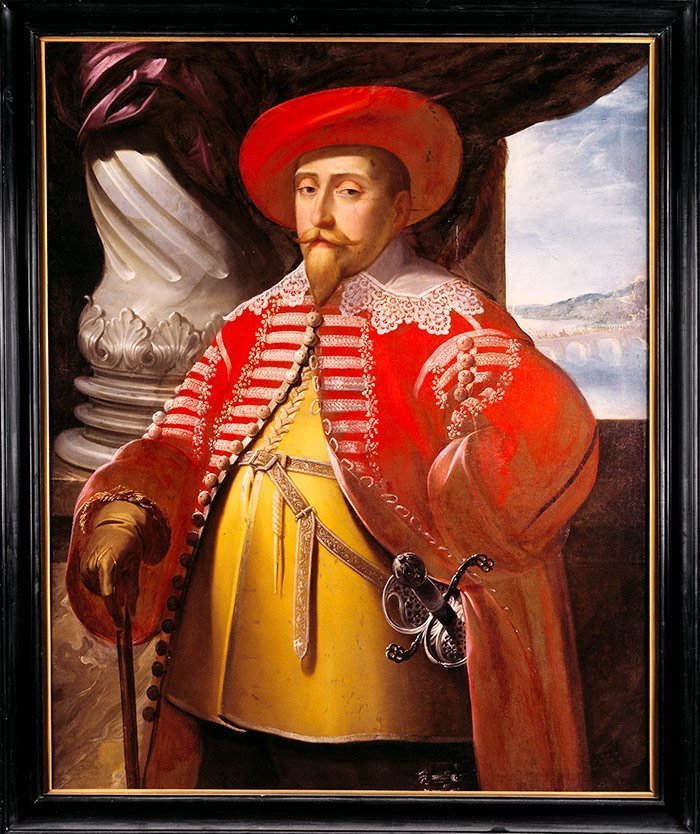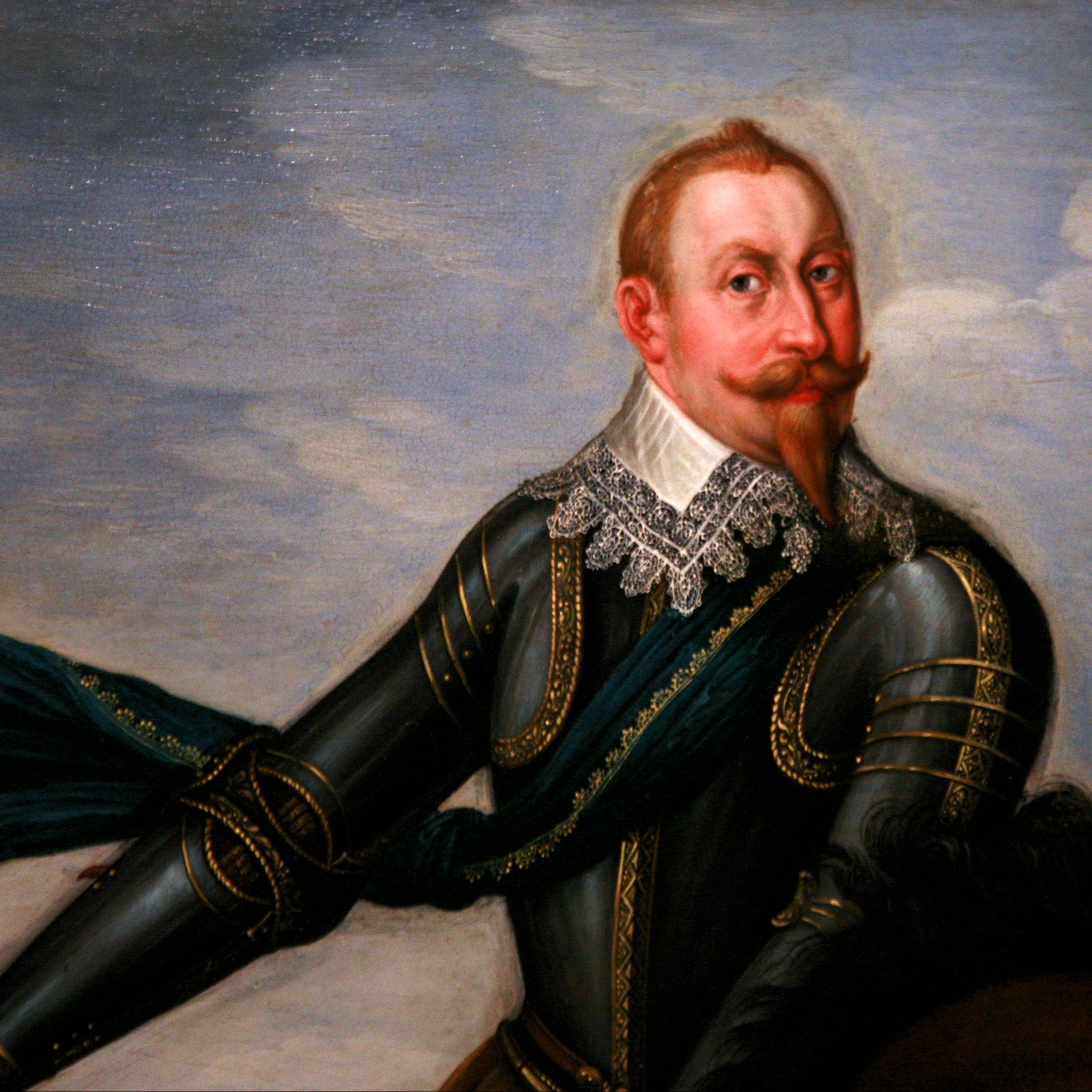Gott Mit Uns
The war within the Holy Roman Empire between the divided camps of Catholics and Jesuits on one side and the Lutheran-Calvinist Protestants on the other had been raging for 12 years, as King Gustav II Adolf of Sweden landed with 16,000 men on the shores of Pomerania in the summer of 1630. It had seemed as if the war was finally coming to an end. The Imperial forces of the Habsburg Emperor and the Catholic Holy League had won victory after victory over the Protestant rebellion, and had even defeated a Danish intervention.
Gustav Adolf planned to succeed where the Danes had failed, choosing to intervene on the side of the protestants and to prolong the war. See, the war between Catholics and Protestants was as much about politics and influence as it was a war about religion, and the last thing the ambitious up-and-coming Swedish Empire wanted was Catholic interference in their realm of influence, so the king chose to intervene with the Protestants. Still, the overall success of his venture was bound with cooperation with the Protestant German dukes and knights.

That aristocracy at first, however, looked upon Gustav Adolf’s army not as a saviour or even as an ally, but as a foreign invader and yet another player on this chaotic chessboard that was to later be known as the 30 Years War. For now, a 16,000-strong army that was quickly bolstering its ranks with both German and foreign mercenaries was just as dangerous to them as the Catholic forces were. The Swedes were an unknown quantity, and many viewed them as semi-barbaric savages who had just popped out of the Middle Ages into modernity. One of the few of the Germans that openly sided with the Swedish King was a man called Christian Wilhelm, the dispossessed mayor of the city of Magdeburg, who forced his way back to power and declared his support for the Swedes.
Well, the commanders of the Holy League, the Count of Tilly and his Imperial Field Marshal, the Earl of Pappenheim, were not about to ignore that, and their forces advanced on Magdeburg and lay siege to it. But as Magdeburg then waited for Swedish help, Gustav Adolf was not able to provide it because of the hesitation of the Protestant dukes and knights in Saxony and Brandenburg in joining him. So, Magdeburg eventually fell on May 10, 1631, and that city’s fall was perhaps the most terrible event of the 30 Years War, and certainly its worst civilian massacre. Rape, pillaging and murder were the orders of the day, and over 20,000 inhabitants were put to the sword in a drunken rage. This brutal sacking was what finally pushed the northern Protestant duchies into the King of Sweden’s camp.
Entering the Breitenfeld battlefield
Gustav Adolf crossed the Elbe River and moved south into Saxony to link up his now 23,000-strong army with an additional 16,000 Saxons. The Count of Tilly, with his 39,000 men, rode north to engage them. The broad plains near the village of Breitenfeld was where Tilly chose to battle. He ordered his infantry – in traditional Spanish fashion – into 17 large squares, where musketeers were protected by a large force of pikemen. His 27 canons were placed on a hill near the centre. The elite heavily armoured cuirassiers of the Earl of Pappenheim formed on the left, while the right wing was manned by the Duke of Fürstenberg’s 3,000 heavy cavalrymen and 900 mounted Croats.
On the misty morning of September 17, 1631, the Swedish-Saxon troops entered the battlefield and came immediately under cannon fire. Gustav Adolf had put his men in lines known as Swedish Brigades, a new tactic of his own, with six ranks of musketeers, protected by blocks of pikemen, so while relying on the power of concentrated musket fire, he could keep more men in reserve and allow his army to be more flexible. He ordered the Saxons to keep his left flank secure, and his own cavalry held the right.
At midday, the Swedish artillerymen were finally firing back. With 68 guns, the Swedes packed not only double the amount of artillery, their gunners were also better drilled. The Swedish artillery could fire up to three times faster than their opponents. A two-hour artillery duel saw the superior Swedish artillery take a heavy toll on the tightly packed imperial formations. Casualties were high as the 24 pounders tore into the ranks, but the Saxons on the Swedish left, who also fought in tight formations, were also wavering under the heavy cannon fire.
By 14:00, Pappenheim on the imperial left had had enough of waiting around. Against Tilly’s orders, he ordered his cuirassiers to move out against the Swedish infantry. The cuirassiers were the finest troops in the imperial army. Heavily armoured from head to toe, they rode out in tight formation, and once close to the enemy, they would fire their pistols and charge with swords in hand into the decimated ranks. That, at least, was the theory, but discipline wasn’t always that enforced, and it became typical that instead of charging, the cuirassiers simply fired their pistols and then rode around the formation to let the others take their shot, until the enemy was weak enough for a safe charge. This was the case at Breitenfeld, but the Swedish brigades were a natural counter to that. As the cuirassiers came close, the musket-heavy Swedish formations concentrated their fire in a deadly salvo, as all ranks fired at once. Each time the cuirassiers moved in to fire, they were met by a murderous hail of bullets and repulsed.
At the same time on the other flank, the already shaken Saxons were attacked by Fürstenberg’s cavalry and the fearsome Croats. The Saxon infantry offered stiff resistance initially, but eventually broke and ran from the battlefield, with Fürstenberg’s men in hot pursuit. Tilly, who had forbidden both of his commanders to ride out on their own, now saw his chance to roll up the Swedes from the flank. He ordered his men to advance, shifting his whole army to swing around, but his tightly packed formations were slow, and before the right wing of the infantry could move into the gap the Saxons had left behind, Gustav Adolf was able to send his second line in to meet the imperial advance, so while the Swedes had withheld a strong tactical advance, the Imperials were now overextending themselves. The whole centre shifted to the right to avoid gaps of their own, and the smoke of the guns and the dust of marching feet created chaos on the field. The Catholics cheered for “Father Tilly” or yelled “Jesus-Maria”, to identify themselves in the melee. The Swedish battle cry was “Gott mit Uns!” (God with us), an old saying the Teutonic Knights used in the Baltics, which originated from early Christian times.
Swedish cavalry advances

Soon Pappenheim was forced to call off his attack. His cuirassiers had taken the worst in the engagement by far. Seeing Pappenheim’s men wavering though, Gustav Adolf ordered a counterattack of his own. The Swedish cavalry advanced, immediately routing the cuirassiers, and then turned on the weakened and now exposed left flank of the imperial frontline. The battle had dramatically shifted in favour of the Swedes. Now they were the ones outflanking the Imperials, as the Swedish right wing moved up. Fürstenberg’s cavalrymen had exhausted themselves in pursuing the Saxon infantry and plundering their baggage, and they in turn were now met by the Swedish reserves and Saxony’s household cavalry. Tilly’s infantry was mauled by the stronger Swedish firepower; without cavalry to fear, the Swedish proved superior in open battle.
As Tilly’s canons were taken by the Swedish encircling move, the battle turned into a disaster for the imperials. Tilly ordered a full retreat before being totally surrounded. Discipline held for a few moments, but as the Swedes brought their cannons into range, the battle was effectively over, and the Imperials ran for the hills.
Gustav Adolf had lost around 2,000 of his men and 1,500 Saxons, while 7,000 Catholics and imperials lay dead on the battlefield. A further 6,000 became prisoners and were immediately pressed into the Swedish ranks. Tilly himself was wounded but was able to escape.
For the Swedes, this was a resounding victory. The next day the protestant Propaganda machine was in full motion. A glorious victory! Divine retribution for Magdeburg! The Lion from the North had triumphed over the Imperial Eagle. In fact, the Catholics had suffered their first major defeat since the beginning of the war and the Protestants all over Germany were again taking up arms.
A show of Gustav Adolf’s superiority
The Battle of Breitenfeld was not only a demonstration of the superior skill and tactics of the Swedish monarch, it also made Gustav Adolf larger than life. He was hailed almost as a biblical figure like Joshua or a new Alexander, who would now march south towards Vienna and then even Rome itself. Gustav Adolf-mania gripped the protestant strongholds, and men began styling their beards like the Swedish King. But you know, it’s a long way to Vienna, and although he had achieved a spectacular victory, his enemies were anything but beaten. 20,000 of the Emperor’s men were already forming in Silesia, and Tilly was determined to raise a new army to avenge his defeat. For the moment, the Swedes were forced to make camp for winter and gather more support for the battles that were yet to come. The war, which had seemed over weeks earlier, was beginning again, and would continue for nearly two more decades.
The Battle of Breitenfeld inspired our song ‘ Gott Mit Uns ‘, which is featured on our album, Carolus Rex. Take a look at the lyrics we wrote here.
If you’re interested in a more visual interpretation of the above story, watch our Sabaton History episode, Gott Mit Uns – The Thirty Years War:





















